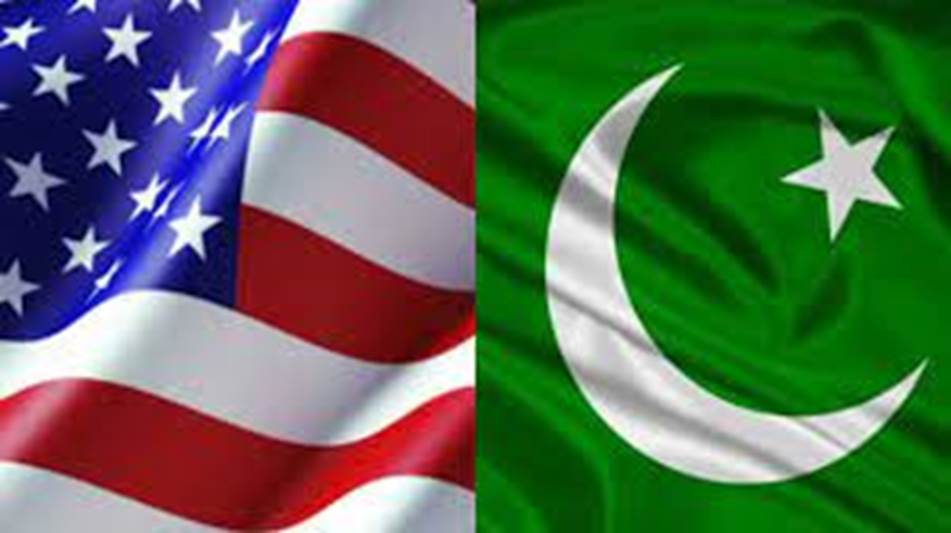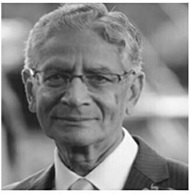
The bilateral relationship between Pakistan and the US needs to become normal if it is to move forward; and it should move forward. A strong relationship is beneficial to both parties. But this normality cannot be achieved without Pakistan itself becoming a normal country, and Washington shifting its focus of interest to the people, from the ruling elite – Modern Diplomacy
Why Anti-Americanism Continues to Thrive in Pakistan
By Touqir Hussain
Georgetown University
US

Pakistan-US relations are on the mend. How far they will go and where they are headed is not yet clear, but the keenness to move forward is evident on both ends. However, one roadblock could possibly limit large-scale progress: anti-Americanism.
The fact is, in today’s world, no state relationship is sustainable without public support. A deep dive on anti-Americanism will, therefore, help Pakistan understand the facts of the relationship to avoid failed expectations and unfair blame in the future, and Washington to not repeat policies that have caused harm to both Pakistan’s interests and its own.
Not-so-right reasons
Anti-Americanism exists in Pakistan for both right and wrong reasons.
The latter first: While the United States has often treated Pakistan unfairly and even high-handedly, public anger against the US for not supporting Pakistan against India in the 1965 and 1971 wars, is misplaced.
The US, in fact, did not break any treaty commitments by not coming to Pakistan’s aid. The Mutual Defense Agreement of 1954 dealt primarily with the supply of military equipment to Pakistan on a grant basis. The US was of the view that Pakistan violated Article 1, paragraph 2, of the agreement by using the weapons for purposes other than what they were provided for.
The bilateral Agreement of Cooperation signed between the two countries in 1959 stated that in case of aggression against Pakistan by another state, the US would take appropriate action (in accordance with the US Constitution). This included the use of armed forces and was envisaged in the US Congress’s 1957 Joint Resolution to promote peace and stability in the Middle East in order to assist the Government of Pakistan at its request.
The 1957 Joint Resolution states only one eventuality of the US coming to the aid of a country under aggression and that is in the event of communist aggression. Regarding the US attitude towards the Central Treaty Organization (CTO), it never perceived the treaty as a military alliance.
Another unjustified instigator of anti-Americanism in Pakistan is the myth that nothing happens in Pakistan without US approval. The reality is that in Pakistan, political dynamics have nearly always functioned fairly autonomously, and the primary — though not always the sole — stimulus for the rise and fall of governments has been domestic, not external.
Yes, the US has previously had the reputation of causing regimes to rise and fall. But reputation is not proof. The world has changed, for better and for worse.
There is no doubt that the US still acts to gain and maintain influence in other countries where its vital interests are at stake but it is no longer in the business of secretly making and breaking governments. Instead, it has gone to war, used the weapon of economic sanctions and supported mass movements for change that serve its strategic interests, all in full view.
The genuine reasons
There is no denying that there are genuine reasons for anti-Americanism as well. The elitist, army-led and feudal-dominated ‘organizing’ idea of Pakistan has long had the US as its external pillar. To its credit, from 1954 to 1965, the US strengthened Pakistan’s defense capabilities and potential for economic development, and helped launch the platform for progress. But the partnership with the US strengthened the army, enhancing its political profile in the country.
American aid and political support helped unrepresentative and inefficient governments sustain power who benefitted from the relationship at the expense of the people. The American connection thus became complicit in Pakistan’s troubled democracy, causing public contempt against the US. This added to the widely-held view that the US had not been a reliable ally.
And then came another thorn in the relationship — the nuclear issue where America’s attitude was viewed as discriminatory by the public and government alike. It piled yet another layer onto the existing anti-Americanism.
Meanwhile, the 1979 Iranian revolution and unfolding of decades-worth of Iranian-US tensions began feeding anti-Americanism across the Islamic world. Pakistani and Iranian anti-Americanism came to reinforce each other, providing the nucleus of a broader sentiment against the US in the Islamic world.
A decade of Jihad in Afghanistan during the 1980s made Pakistanis more vulnerable to fundamentalist Islamic rhetoric than ever. This came in the backdrop of the larger Islamization project set forth by General Ziaul Haq. Thus, as the Cold War drew to a close, the vast majority of the public, particularly the intelligentsia, harbored varying degrees of anti-Americanism.
The bad breakup
With the imposition of Pressler sanctions in October 1990 , this permeated to Washington’s most trusted ally — the army. The US had no reliable ally left in Pakistan.
The US response to the 9/11 tragedy, along with the ill-conceived war on terror, set in civilizational terms as a war of ideas, came to be seen as an attack against Islam by a vast majority of Muslims. As a consequence, anti-Americanism exploded uncontrollably.
Pakistan suffered greatly at the hands of the spill-over of the war on terrorism and the Afghanistan war. It came to threaten Pakistan’s stability — on one hand with the creation of the TTP, and on the other, by spreading anti-Americanism among the wider population, making it vulnerable to radical influences.
The Pakistan Army had its own issues with the Afghanistan war. The war ended up creating an Afghanistan that was not consistent with Pakistan’s strategic interests. It resulted in an increasing amount of power and influence from India in Afghanistan, and India’s enhanced role in the region was attributed to Washington’s support.
My enemy’s friend
India’s growing relationship with the US, especially the nuclear agreement, and Washington’s refusal to give Pakistan the same deal , fostered perceptions that India and the US were opposed to its nuclear program, among the army and general public alike.
Anti-Indian sentiments and anti-Americanism merged. Religious, nationalist rhetoric was co-opted by secular and liberal circles who affixed it to their existing unhappiness with the wars on account of how Pakistan was dragged into it by a dictator leading to a prolonged undemocratic rule.
So, democracy, Islam, honor, sovereignty and nationalism all came to provide a common platform — anti-Americanism — to a wide cross section of political opinions, religious beliefs, and social statuses.
Enter Imran Khan
After being in the political wilderness for years, Imran Khan realized he must first create a base in one part of the country. The opportunity came his way with the increased anti-American sentiment following the exponential rise in drone attacks , failing Afghanistan war and its continued horrendous spill over in Khyber Pakhtunkhwa.
The consummate politician that he is, Khan tapped into anti-Americanism, Pashtun nationalism, resistance against a big power, and Islamism with a single stroke — support for the Taliban .
More than an expression of support for the Taliban, it was a symbol of opposition to America. He created a base in KP from where he could now expand his appeal to the rest of the country. He did so by stoking long-standing public anger and feelings of injustice at the hands of the country’s established political leadership, and a sense of victimhood, incited by America’s post 9/11 wars.
The strategy was to malign his political opponents and the system on one hand, and the US on the other, both in the worst possible terms. And then to connect his opponents and the US in a relationship that he described in the worst possible way — slavery.
It had a powerful appeal to the aspirations of the young, educated class and the Pakistani diaspora , especially in the West, whose increasing economic status was struggling to find social recognition due to the country’s negative image which they had hoped Imran would change.
Mostly well off, for them, the economy was not a priority, but the image, honor and nationalism. For the poor struggling for their survival, he tagged the “Riasat-e-Madina” label. So some he courted with hope, others with illusion and some with a choice of being better than his rivals.
Anti-Americanism not only helped him to come to power but also rescued him when he lost power. The cipher was a God-sent opportunity. Diplomatic language in the hands of a non-diplomat can be interpreted in diverse ways, and being a classified document, cannot be shared with the public.
An ideal situation for a politician to exploit its contents to political ends without being accused of falsehood. The document was seen as proof, validating his supporters’ long held negative perceptions of America and giving unquestioned credence to Khan’s entire political rhetoric.
And by highlighting the army’s shared interests with the US, he implied its involvement in the alleged conspiracy, broadening his appeal among those opposed to its domination of politics. The strategy raised his stock enormously.
As we look to the future, people need to recognize for the good of the country that Pakistan has had serious problems of governance, social change, democratization and development, for which we ourselves are primarily responsible. The US has not created these conditions but merely exploited them.
The bilateral relationship between Pakistan and the US needs to become normal if it is to move forward; and it should move forward. A strong relationship is beneficial to both parties. But this normality cannot be achieved without Pakistan itself becoming a normal country, and Washington shifting its focus of interest to the people, from the ruling elite.
(The writer, a former Ambassador, is adjunct professor at Georgetown University and Visiting Senior Research Fellow at the Institute of South Asian Studies, National University of Singapore. Dawn)

